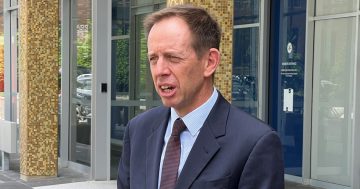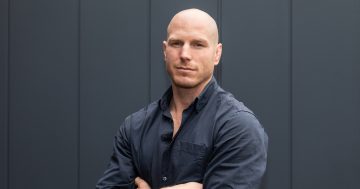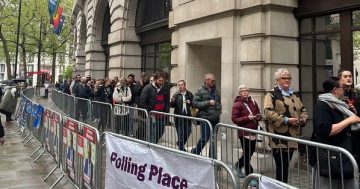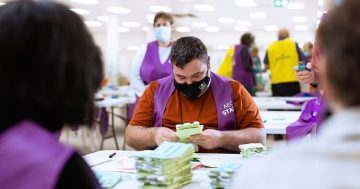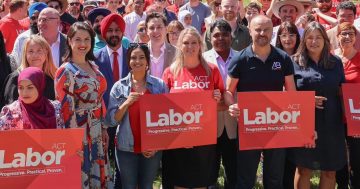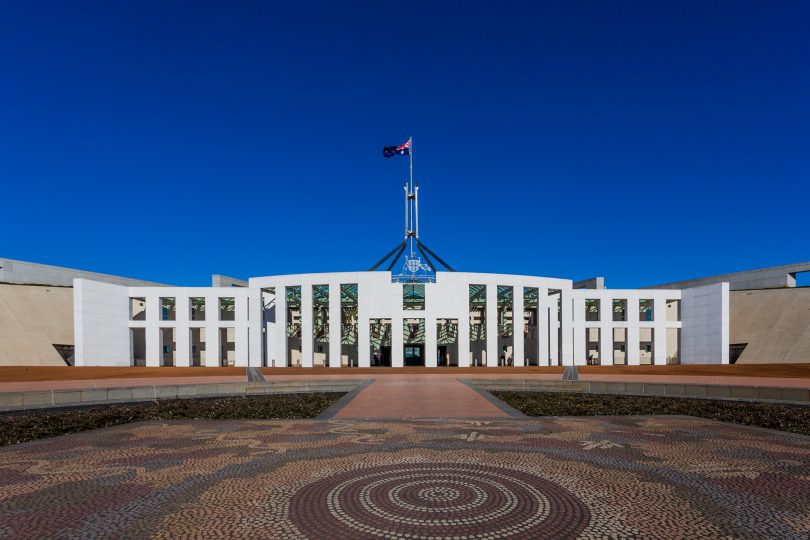
There is a strong likelihood that the ACT will today be granted an extra seat in the House of Representatives. Photo: Jack Mohr.
The degree of difficulty for the Coalition Government to be returned at the next election is about to get that much harder with the strong likelihood that a growing ACT will today be granted an extra seat in the House of Representatives, with Labor a strong favourite to benefit.
Around lunchtime today, Thursday August 31, the Australian Electoral Commission is expected to rule on the need for any redistribution of electoral boundaries for the next election due in 2019, based on the latest population data from the Australian Bureau of Statistics.
According to a Parliamentary Library analysis, the ACT and Victoria will both gain a seat while South Australia will lose one, with the size of the 46th Parliament increasing to 151 seats.
The main ACT parties may be about to go to war over the third seat but they are on a unity ticket when it comes to more representation for the Territory, which has the two largest electoral divisions by population in the country.
Labor ACT branch secretary Matthew Byrne said that with the ACT’s population now over 400,000, it was getting closer and closure to the population of Tasmania.
“But we don’t have the kind of constitutional privileges they do, so it is worthwhile for a city that’s growing like ours to be represented properly in the Federal Parliament,’’ he said.
Liberal Party president Arthur Potter said a third seat was definitely overdue, while the Greens Convenor Michael Mazengarb said a third seat would make the ACT more democratic and the party was savouring the chance to offer an alternative to the main parties.
“There is no doubt that the Federal Liberal and Labor parties have grown complacent with two ‘safe’ Labor seats in the Federal lower house,’’ he said.
But the Greens might be dreaming if they feel they can replicate their inner city Melbourne cousins.
Emeritus Professor of Politics at the ANU John Warhurst said their time had not yet come for that kind of proposition, although their preferences may play a role.
He believes a Labor win is the more likely outcome and in a tight race every seat will count, even if at present the Government is floundering in the polls and bedevilled by the citizenship saga and gay marriage.
“If the next election is pretty tight, as it probably will be that’s a bonus for the Labor Party and improves its chances of winning overall if it gets very close,’’ Professor Warhurst said.
Not that Labor is chalking up the seat in its column yet, and the Liberals are quick to refute any suggestions that they are not in the running.
Mr Potter said it depended on how the new electorates were carved up but he thinks the Liberals would be in with a very good chance based on polling showing its base vote is ‘actually very strong’, particularly in the south.
“We’ve been chipping away at the margins of the seat of Canberra for a number of elections but if the demographics of that seat were to change, and incorporate those new areas of Coombs and Wright in Molonglo and the third seat is based around Tuggeranong I think we’d be in with a very good shot,’’ he said.
Mr Byrne said it was all bluff and bluster until the new electoral boundaries were known, and that goes for his party as much as the Liberals after a recent branch conference where the spectre of a factional preselection brawl was raised.
He played down that possibility, saying the conference differences were more to do with anxiety around proposed voting eligibility changes, with the third seat being a ‘bit of straw man’ for that debate more than anything else.
The last preselection process in 2010 was a bumpy one, with Federal moves to impose a preferred candidate rebuffed by the local branch.
Mr Byrne was quick to again assert the ACT’s independence.
“These things are always hotly contested … and there was little intervention from the leadership at the time and I would expect that state and territory parties are largely left to their own internal processes when it comes to preselection,’’ he said.
Professor Warhurst said Canberra tended to attract high-profile candidates, although there is no sign yet anyone making a move from senior party levels, the assembly, Public Service or the community sector.
With a previous Canberra seat going to the Liberals the last time there had been three seats in the ACT, Labor wasn’t taking anything for granted but Mr Byrne dismissed the Liberal claims.
“People should have a look at the returns for the Liberal Party and how much research they’ve done recently – very little. I would take what Arthur says with a grain of salt,’’ he said.
He rejected the notion that a friendlier Federal Budget and an improved Public Service jobs outlook would make the Liberals more attractive to ACT voters.
“There is always a threat that a Liberal Government looking for savings will do what they naturally do which is attack the Public Service, but the Public Service is not the only thing that determines votes in the ACT,’’ he said.
“Yes job security is a serious motivator but when it comes to health, education funding, the provision of services and infrastructure like the NBN, I think Canberrans are pretty skeptical of the Liberal Party.’’
Mr Potter hoped a third seat meant Canberrans were not prepared to put all their eggs in one basket and would look to the Liberal Party to spread the risk.
“Canberrans are smart voters, they understand that if there were three seats here and one of them was Liberal and the others Labor that really would be Canberra hedging their bets,’’ he said.
He said budgets and “all that other stuff’’ came and went.
If Labor does add a third seat to its local tally, Professor Warhurst said the Caucus could have up to five Canberra region members, if you concede that the popular Gai Brodtmann and Andrew Leigh are safe, and you throw in Mike Kelly in Eden-Monaro plus Senator Katy Gallagher.
“With five of them you start to have quite a voice in Caucus,’’ he said.
All players though will have to wait on what could be a lengthy redistribution process to see how the ACT will be divided, a process that might collide with the not improbable possibility of an early election given the Government’s single seat buffer in the House. The requirement for a half-Senate election by May 2019 also complicates matters. An election for the House has to be held on or before 2 November 2019.
The AEC said a standard redistribution process could take up to a year, with requirements for public submission periods and comment, and then time to consider any objections once the redistribution committee proposes new boundaries.
But a spokesman said it “is going to be cognisant of when an election can be called and do things as quickly as possible’’.
The parties are playing a waiting game at present but Professor Warhurst said that they would want the Parliament to go full term so they had time to select candidates and had plenty of time out in the field.
“You wouldn’t want the redistribution to run on too long or you could run into trouble at the other end,’’ he said.
Today’s decision won’t have the parties out of the blocks but it should provide some electoral justice to ACT voters and could give Labor an edge, should it need one, when the next election is called.
It would be fitting twist if it came down to the long-neglected and under-represented voters of the Territory who decided the next government.


 I have travelled personally to Vietnam many times and have eaten in many…
I have travelled personally to Vietnam many times and have eaten in many…  for her
for her 









